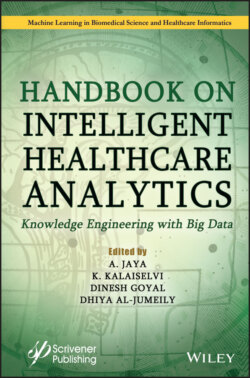Читать книгу Handbook on Intelligent Healthcare Analytics - Группа авторов - Страница 51
2.4 Results and Discussion
ОглавлениеFrom the observations on each state moves, the probability with the power of the matrix is generated. Let us consider the steps as state-to-state transition.
Let A and B be the two states with K steps, which have many possibilities to initialize the time with constant value. When the iterations started from one to the i-th iteration, there will be the same number of vector probability ratio that are identified with three states such as natural disasters (Figure 2.4), dry, and drought. Figure 2.3 shows the variations of number of disasters.
Table 2.2 defines the dataset year-wise and its ratio when it is trained according to the NN. In addition, testing data with rating as well reported on a year basis are monitored from the parameters that match according to the testing and training accuracy.
Figure 2.4 shows the entities that are identified from the united states of America on various years that have the impact according to the climate changes. Prediction using this dataset based on the developed feature analysis can be performed. Each and every disaster along with the disasters reported year-wise with the count is also reported.
Natural disaster according to the disaster effects and probability of occurrence using stochastic matrix is described in the analysis. Figure 2.5 illustrates the understanding of probability ratio. It clearly indicates the year-wise analysis of the disaster along with the economic damage that is caused by these damages. Figure 2.6 shows the boxplot view of natural disasters on various entities.
Figure 2.3 Total number of disaster analysis using improved Bayesian Markov chain model.
